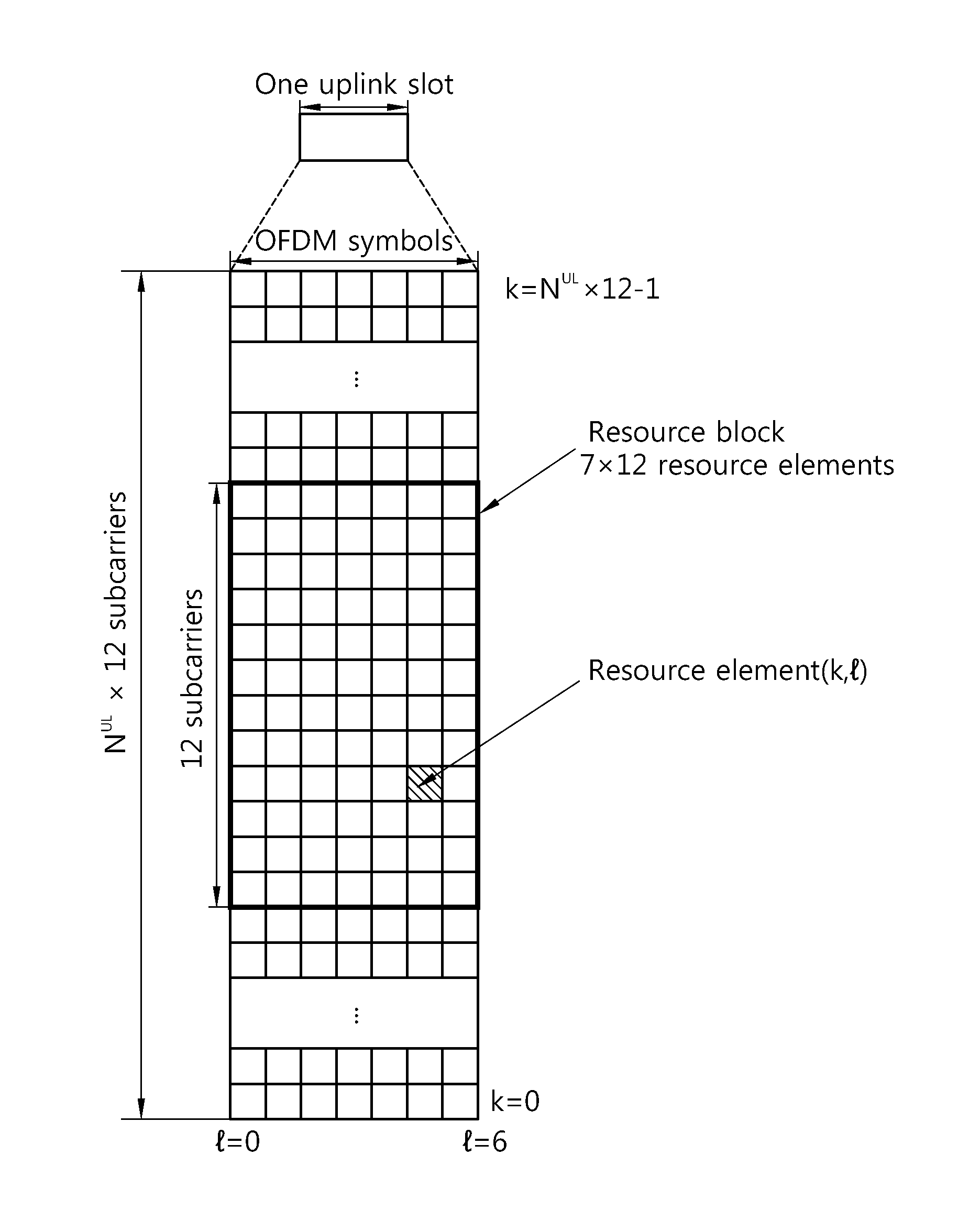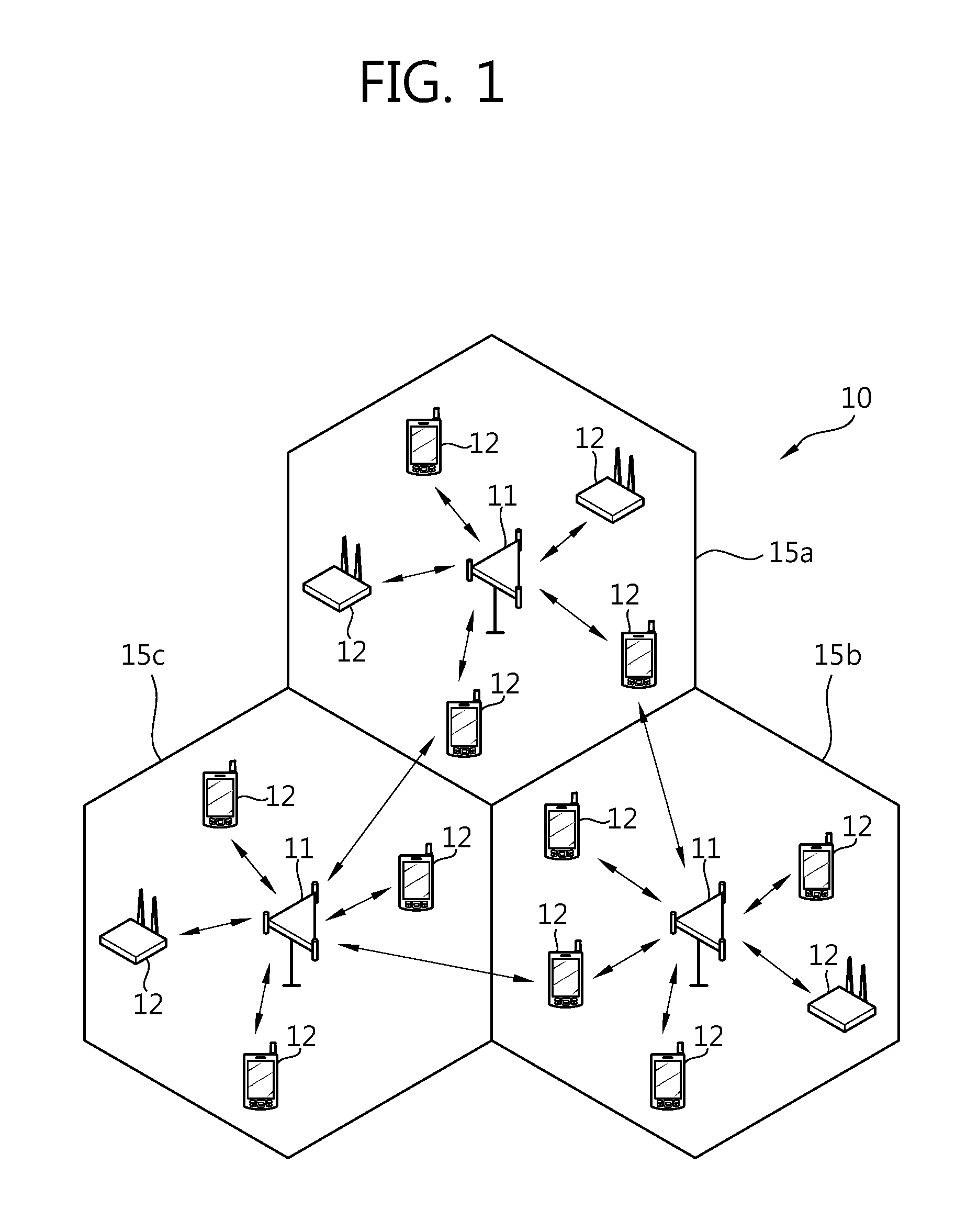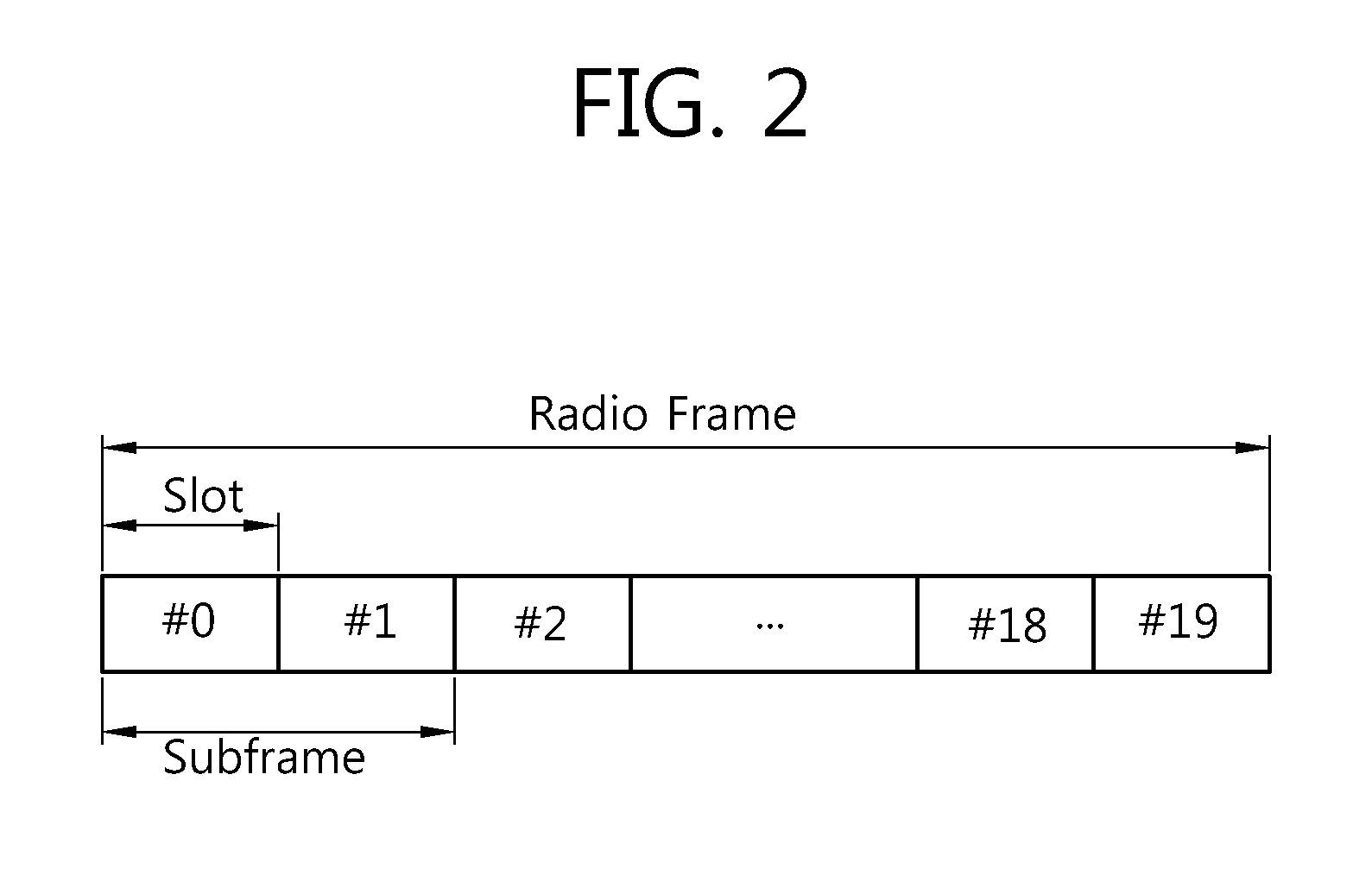Method and apparatus for data transmission using a plurality of resources in a multiple antenna system
- Summary
- Abstract
- Description
- Claims
- Application Information
AI Technical Summary
Benefits of technology
Problems solved by technology
Method used
Image
Examples
first embodiment
[0120]Backward compatibility with the existing LTE is first taken into consideration.
[0121]As shown in Table 5, in the existing PUCCH format 2, a maximum size of the payload is 13 bits. Accordingly, when the size of the CQI information bits is 13 bits or less, the existing PUCCH format 2 is used without change. When the size of the CQI information bits is greater than 13 bits, the resource selection scheme may be applied to bits greater than 13 bits.
[0122]Exemplary applications to the proposed resource selection scheme and SOR / SCBC are described in more detail below. The size of the payload, the number of allocated cyclic shift indices, and the number of encoded bits are only exemplary.
[0123]It is assumed that the size of CQI information bits to be transmitted is 18 bits and two cyclic shift indices Ics1 and Ics2 are allocated. 13 bits of the 18 bits are encoded through block coding and the remaining 5 bits use the resource selection scheme.
[0124]More particularly, the following CQI...
second embodiment
[0185]A scheme for applying resource selection using a new mapping rule to multiple antennas transmission is described below.
[0186]FIG. 18 is a block diagram showing an application of the mapping rule. A payload is encoded by an encoder, thus becoming encoded bits (810). There is no limit to the encoding method, and a well-known method, such as block coding, convolutional coding, TBCC (tail-biting convolutional coding), or turbo codes, may be used as the encoding method.
[0187]The encoded bits are converted into a modulation symbol using a mapping rule in which a resource selection scheme using a plurality of allocated cyclic shift indices and a modulation scheme are combined (820). Assuming that the encoded bits are m bits, a plurality of cyclic shift indices, corresponding to n (n≧1) bits of the m bits, and PSK (Phase Shift Keying) of a 2(m-n) order or QAM of a 2(m-n) order, corresponding to (m−n) bits, may be used.
[0188]It is assumed that the encoded bits mapped to one modulation ...
third embodiment
[0219]When both resource selection and precoding are used, the capacity of a payload can be further increased and a relatively low CM can also be obtained.
[0220]FIG. 22 is a block diagram showing a resource selection scheme using precoding. A payload is encoded by an encoder, thus becoming encoded bits (910). The encoded bits are mapped according to a predetermined modulation scheme and then converted into a modulation symbol (920). The modulation symbol is precoded into a precoding matrix (or a precoding vector) corresponding to a cyclic shift index (930). Each row of the precoding matrix corresponds to the cyclic shift index. The precoded modulation symbol is subjected to spatial processing according to a relevant cyclic shift index (940). An SOR or an SCBC may be used as the spatial processing.
[0221]The spatially processed symbol is spread into a sequence corresponding to a relevant cyclic shift index. The spread sequence is mapped to a physical resource and then transmitted (950...
PUM
 Login to View More
Login to View More Abstract
Description
Claims
Application Information
 Login to View More
Login to View More - R&D
- Intellectual Property
- Life Sciences
- Materials
- Tech Scout
- Unparalleled Data Quality
- Higher Quality Content
- 60% Fewer Hallucinations
Browse by: Latest US Patents, China's latest patents, Technical Efficacy Thesaurus, Application Domain, Technology Topic, Popular Technical Reports.
© 2025 PatSnap. All rights reserved.Legal|Privacy policy|Modern Slavery Act Transparency Statement|Sitemap|About US| Contact US: help@patsnap.com



